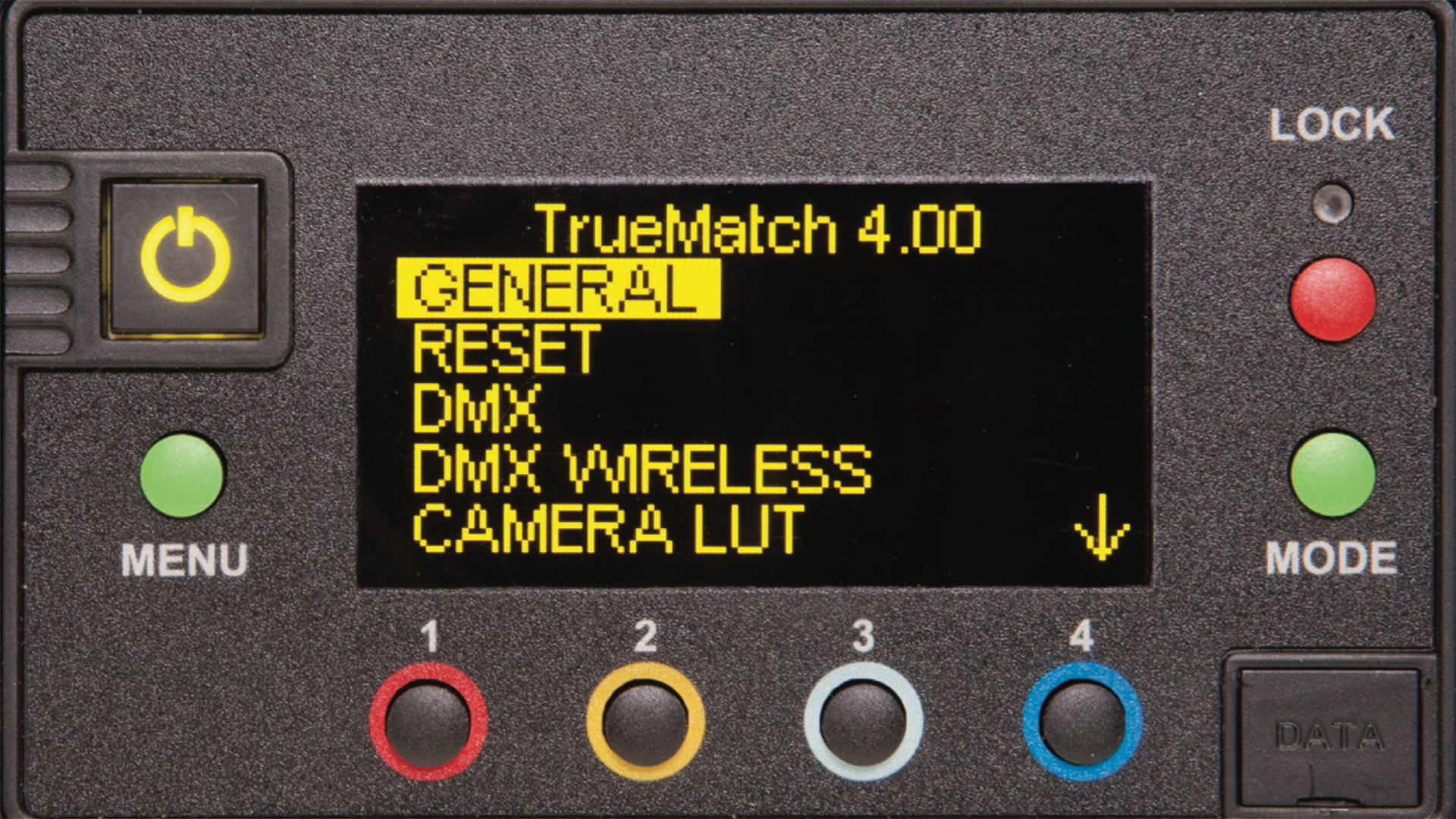
Replay: Some of Kino-Flo’s lights have, for a while, allowed the user to select the camera in use. As far as we know, Kino is the only company to offer this. Why is it important and is it something other manufacturers need to do?
For a long time, the film industry got away with assuming that the light falling on a scene would have the same amount of red as it had green and blue. For that matter, it would also have the same amount of slightly orangish-yellow as it had turquoise, cerise, or any other colour. This means that camera manufacturers could pick more or less any red, any green and/or any blue to use in cameras, and they could still assume there would be enough light of any particular colour falling on the scene for each colour channel to see a strong signal.
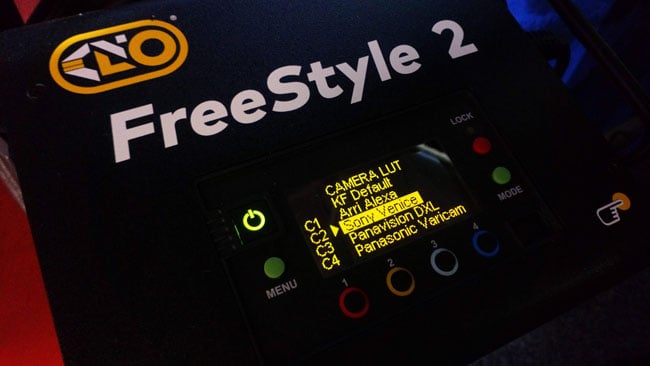
Kino-Flo now tune light on a per-camera basis.jpg
Since the middle of the twentieth century, there have been plenty of lights around that don’t fulfil that assumption. Let's look at a (deliberately extreme) example. If the light doesn't have any really deep blue in it, it might still look white since there might be more medium blue to make up for it. But if we use a really deep blue filter in the camera, suddenly everything in the scene will start looking yellow and deep blues will be undersaturated, as here.
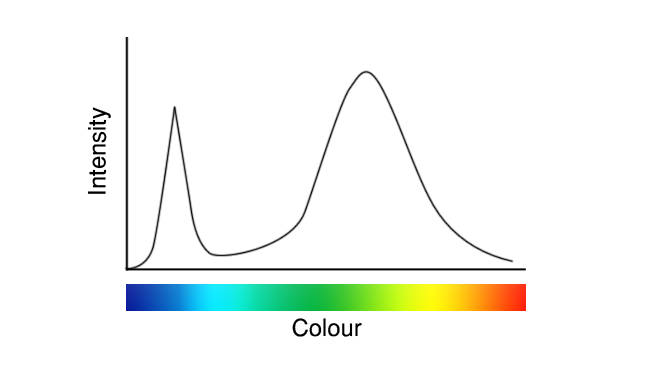
What makes this complex is that there are no standards for the colour filters on cameras. Pick a slightly different, wider, less saturated, more medium-blue filter for the camera, as some manufacturers might, and things change enormously. The light is still deficient in deep blue, but the mid-blue light that is coming out of the scene can get through the blue filter in the camera and everything looks OK. There might still be a small deficit in the really deep blues, such as the coat and hat, where there just isn’t enough light to illuminate the fabric – but that would affect all cameras equally.
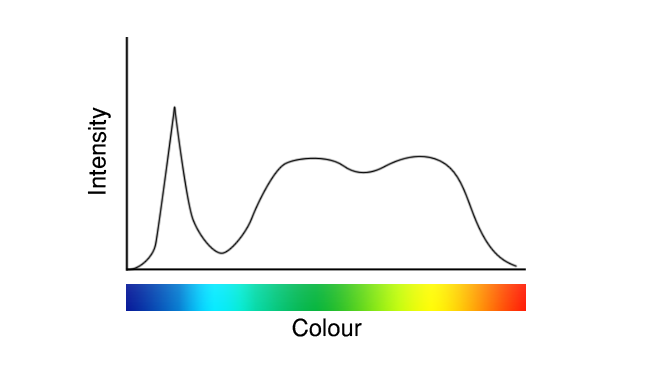
What we have here is a situation where two different cameras, both of which are well-made and operating according to a reasonable specification, can see the same thing differently. On one hand, that's the most obvious thing in the world: cameras don't all look the same. On the other, it also means that one camera might see two lights differently that look the same to the eye. That's what's really the problem here. The eye has, in effect, extremely wide sensitivity to reddish, greenish and blueish light and it's minimally affected by these problems.
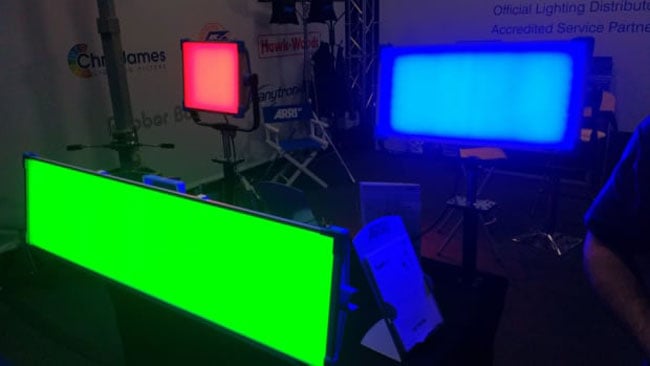
Party colours are easy. White not so much
There are all kinds of reasons to have mixed colour temperature in a scene, but we probably wouldn’t want, for instance, two sunbeams that look slightly different shades of white (especially when they only look different to the camera and not to the eye).
The example used above is based on the real-world fact that a lot of LEDs do actually lack very deep blue output, though most cameras don't have nearly such narrow, saturated filters as the curves we've shown here, so the problem is much less noticeable than we've shown. It's so small, in fact, that most lighting and camera manufacturers overlook it and things seem to go reasonably well. It isn't a problem solely of LEDs, either; it's a problem of all lights which don't emit the same amount of every colour. That includes things like HMIs and even the best, most movie-grade fluorescent tubes.
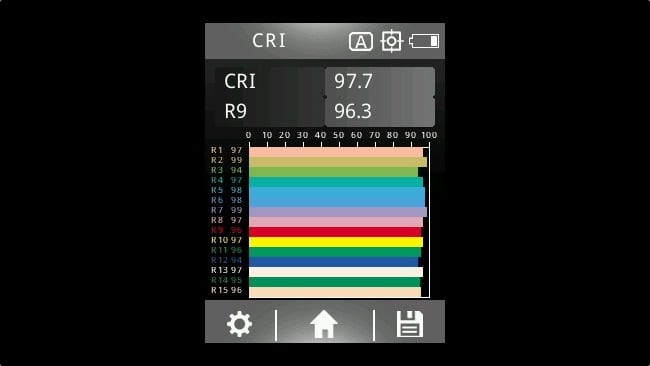
This is a real-world measurement of a high-quality LED light, the Fiilex Q8 Travel. Exposure is similar across the colour range
Lighting people historically carried lots of one-eighth colour temperature correction gels and established combinations of filters to correct all the production's lights in prep (which works, until an HMI bulb fails). It's quite possible to do that now, of course, but it doesn't actually solve the same problem. The whole issue here is that making two lights look the same to the eye does not necessarily make them look the same to a camera and doesn't guarantee either of them to actually look nice.
This is, to be fair, a subtle problem and it's been a subtle problem for a while without creating an awful lot of issues. It's a big enough deal, however, that Kino-Flo has options in its currently available LEDs which allow users to select from a few popular cameras. The colorimetry and mathematics behind this are based on characterising cameras in terms of the relationship between the light that goes in the front and the signal that comes out the back so that an LED light set to 3200K produces as neutral a result as possible on a camera set to 3200K.
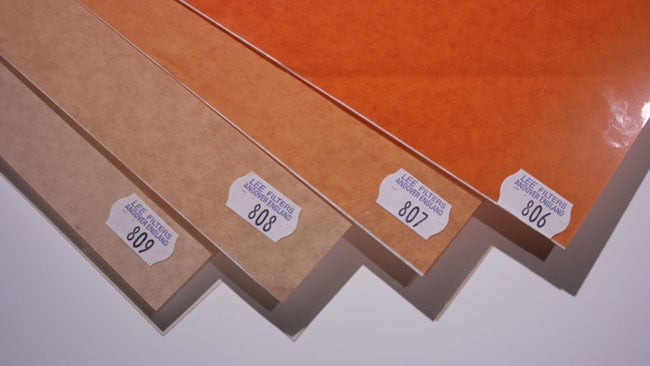
Lee's Zircon range of colour temperature correction filters intended for LEDs
In theory, this ought to be simple. A notional Rec. 709 camera would have colour filters matching the red, green and blue colours specified for monitors in Rec. 709 and no colour processing would be required. No real camera has worked like that for decades, though; different colour filters are used according to technical convenience and the resulting colour is processed mathematically so as to look correct — in the view of an engineer. As such, there is a huge variety of systems out there with complex colour behaviour and each of them would need to be individually assessed, in a lab, to allow any light to be individually matched to the camera.
The problem that Kino-Flo is solving with this is subtle and there isn't really any solution that can work for a situation where there might be different types of cameras rolling simultaneously. The problem it solves, though, is hard to solve any other way: if we have two lights that unexpectedly look different, that's at least complicated and perhaps impossible to solve with grading. There's no generalised way to isolate the results of one light in a scene and tweak it.
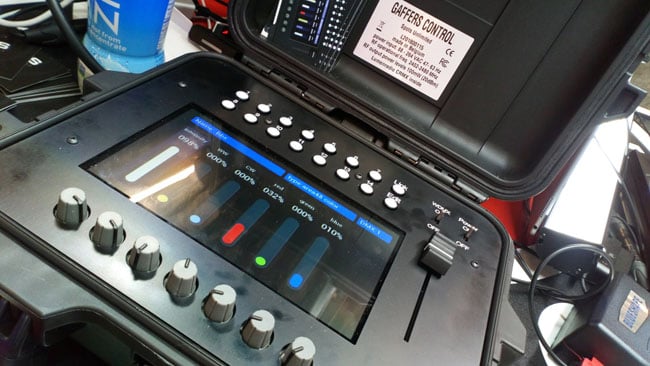
Start playing with full colour mixing lights and things become really complicated
Of course, the reality is that this sort of thing only reaches maximum usefulness when everyone is doing it and currently Kino-Flo is the only immediately available example (if anyone else is doing per-camera tweaking of lighting, let us know in the comments). Possibly, it's something that's only become worthwhile given the huge amount of attention that's now paid to colour consistency of lighting. So, it's probably reasonable to think of Kino-Flo's work as another step, if a particularly advanced one, in the march of lighting progress. If it makes everyone into a connoisseur, there's nothing wrong with that. After all, we might never have been so picky about the colour quality of light, but we've rarely seen any technology so capable of fulfilling our every whim.
What's important, at the end of the day, is that our carefully designed costume drama doesn't take place on an alien world that basks in the glow of two slightly differently coloured suns.
Tags: Production


Comments